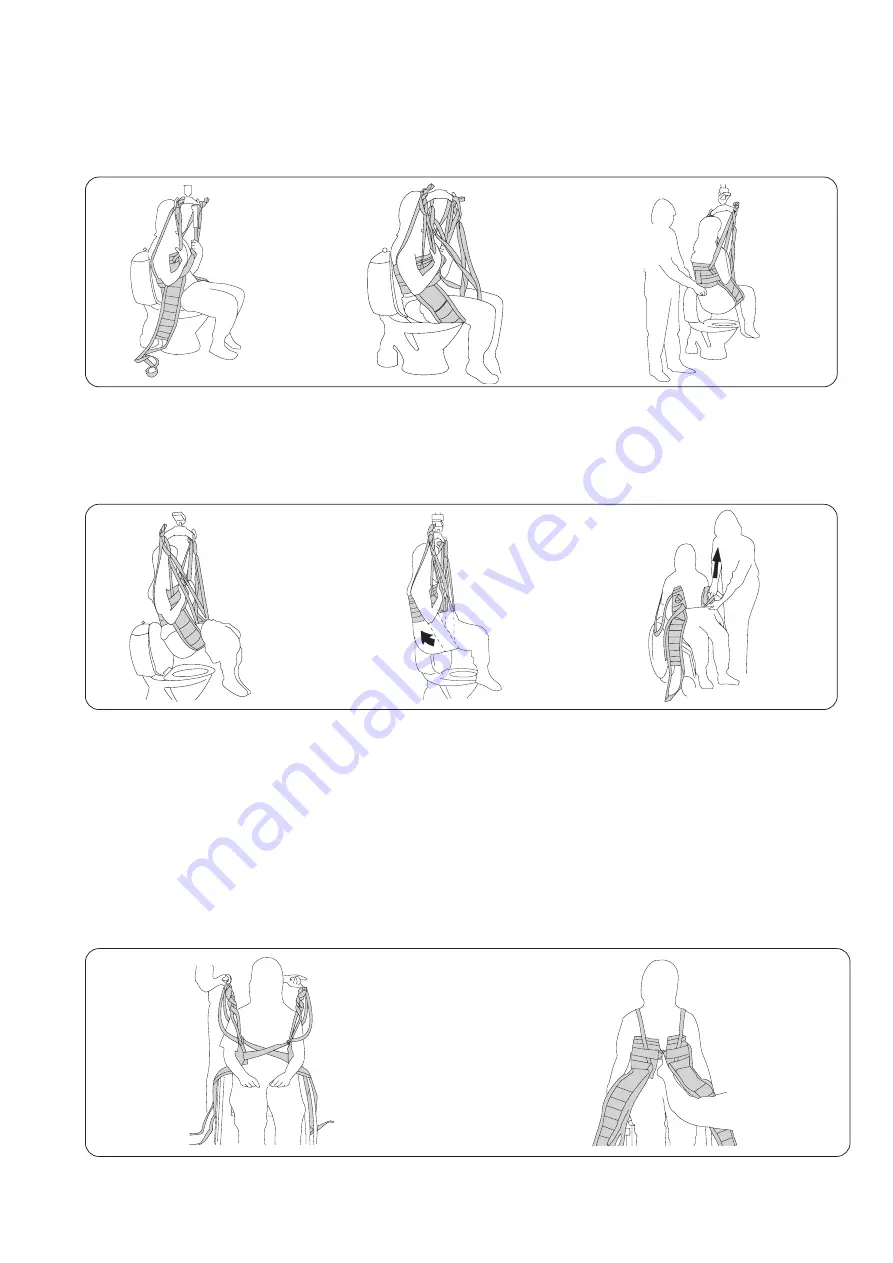
9
7EN160167 Rev. 8 • 2020
www.hillrom.com
Described below are two ways of dressing the patient after a toilet visit. The most appropriate alternative depends on the
patient’s condition and type of clothing.
Draw the pants up as close to the
crotch as possible.
Position the leg supports under the
thighs but outside the pants. Connect
all loop straps (see page 10). Lift.
If needed, place an incontinence pad
inside the pants before you draw them
over the hips. Transfer the patient and
lower him/her into the wheelchair.
Connect all loop straps (see page 8).
Lift. An incontinence pad can be placed
inside the crossed leg supports.
Pull the pants up over the hips and leg
supports while the patient is sitting in
the sling. Transfer the patient to the
wheelchair.
Disconnect the strap loops. Carefully
work the leg supports out of the pants
and remove the HygieneVest.
Alternative 1
: Leg supports outside the garments. Appropriate for patients with non-elastic pants.
Alternative 2
: Leg supports inside – pants outside. This method is appropriate for patients with elastic pants.
Return Transfer from Toilet to Wheelchair
Too small. The gap is too wide and the loop straps are
shorter than the shoulder straps when suspended.
Too large. The metal D-rings meet and the vest cannot
be tightened enough with the loop straps.
Selecting the right size
Check the size of the gap between the front edges of the vest when it is closed. The gap varies depending on the size of the vest,
but it should be between 5 and 30 cm (2-12 inch.). The larger the size, the wider the gap can be.
It is essential that the HygieneVest width is correct in relation to the girth of the patient’s upper body. Distribution of pressure
around the chest varies according to sling bar width. Try different variations.
Fitting Instructions















